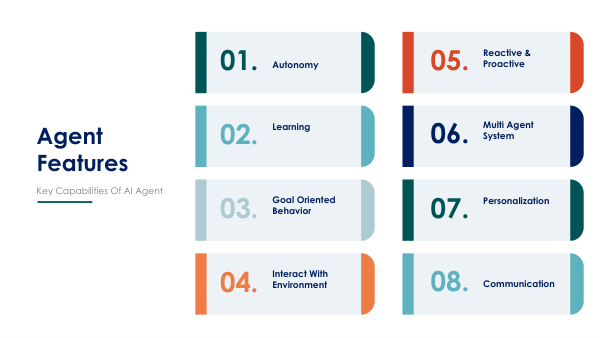a2a-slides
Introduction to A2A CommunicationThe Backbone of Collaboration in Agentic AI What Are Multi-Agent Systems?A Multi-Agent System (MAS) comprises independent, smart agents. These agents communicate and engage with their environment, aiming for personal or group objectives. Imagine a collaborative team: each member acts autonomously, playing a designated role, and yet they synchronize efforts for complex project completion. Here are a few options, all around the same length and conveying a similar meaning: * Fig 1: Conceptual overview of a Multi-Agent System: interconnected, collaborating agents. * Figure 1: Depiction of a Multi-Agent System. Agents (nodes) interact and work together. * Fig. 1: Multi-Agent System model: Agents (nodes) engage in communication and cooperation. * Figure 1 illustrates a Multi-Agent System: Agents (nodes) are communicative collaborators. Consider familiar examples: an ant colony's foraging, a soccer team's intricate maneuvers, or air traffic controllers managing flights. Each illustrates that a system's strength stems from seamless communication and collaboration, not just individual skill. Why A2A is the Backbone of Intelligent CollaborationIf agents are the intelligence of a MAS, then A2A communication is its lifeblood. This vital link turns individual agent thought into shared knowledge. Without A2A, a MAS is a disconnected group; with it, a collaborative powerhouse emerges, capable of solving complex problems. Coordination & SynchronizationTo coordinate, agents exchange status, plans, and goals, preventing clashes and orchestrating tasks sequentially (e.g., "Initiating A; B done yet?"). Negotiation & AgreementHere are a few options, all similar in length and capturing the essence: * Agents negotiate, propose solutions, and agree on resource use or tactics. * Agents are able to negotiate, suggest options, and find agreement for strategy or resources. * Agents can collaborate to negotiate, propose, and come to decisions about strategy or resource use. * Agents can trade, propose compromises, and collectively decide on resources and direction. * Agents interact to negotiate, present ideas, and achieve accord regarding resources or tactics. Shared Knowledge & LearningHere are a few rewritten options, aiming for similar length and meaning: * New knowledge shared system-wide accelerates overall adaptation and refinement. * The system rapidly improves as fresh data is broadcast for collective learning. * Agents' updates instantly enhance the system's ability to learn and evolve. * System-wide information sharing fosters rapid collective adjustment and betterment. * Instant dissemination of findings allows quick system-wide upgrades and improvements. Task DelegationA single agent can decompose complex problems, assigning specialized sub-tasks to other agents equipped for efficient execution. Real-World ApplicationsHere are a few options, aiming for similar length and meaning: * A2A communication principles drive complex systems now. * Advanced systems currently utilize A2A communication. * A2A communication underlies modern, sophisticated systems. * Today's complex systems rely on A2A principles.
The Future is CollaborativeWith AI's advancement, the emphasis is moving from single-agent smarts to the combined strength of collaborative systems. Agent-to-agent (A2A) communication enables this teamwork, fostering more robust, effective, and intelligent AI for tackling global challenges. |
1-intro-agent-to-agent-slides 8-core-principles-for-researc A2a-slides Agent-ai-evolution Agentic-ai-shift-autonomous-s Agentic-ai Ai-agent-suitability-framewor

